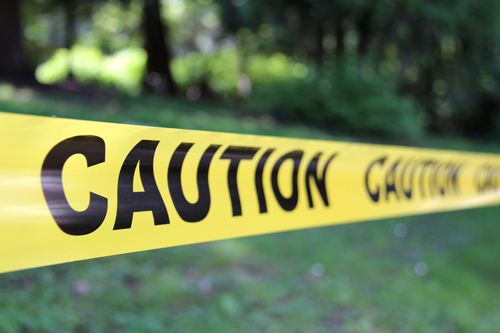Geoscientists are helping to put the rigour back into forensic science
Whitchurch, A., Geoscience in the dock.
Geoscientist 29 (2), 5, 2019
https://doi.org/10.1144/geosci2019-007;
Download the pdf here

Over the past few decades, forensic science has experienced something of a crisis. In numerous high-profile cases, people convicted of serious crimes were exonerated years later due, in part, to flawed forensic evidence.
The severity of the problem was highlighted in a highly critical 2009 US National Research Council report that called for an overhaul of the entire system. More recently, a 2016 report from the US President’s Council of Advisors on Science and Technology emphasised the need to establish forensic methods as valid and reliable, while a 2018 UK Forensic Science Regulator document stressed that only reliable evidence is admissible in court. Most of the concerns centre on techniques like DNA, bitemark and hair analyses, but the problems cast a dark shadow over the whole field.
What does all this have to do with geology? Well, the geosciences have a small but important role to play in forensic science. As highlighted in a
Meeting Report on page 26 of this issue, an ever-expanding range of geoscientific and archaeological approaches are used in forensics, and the geoscience community is engaged in the robust testing of these techniques and their application to crime scenes.
For example,
recent research has shown that LiDAR is effective for identifying clandestine graves because pulsed laser light can penetrate undergrowth to image recently disturbed ground.
Work is also on-going to test the suitability of geophysical methods for detecting and characterising graves in the sub-surface. Buried pig cadavers—both naked and wrapped in tarpaulin—are monitored using electrical resistivity measurements and ground-penetrating radar. It seems that the usefulness of the geophysical approaches varies depending on the style of and time since burial. Decomposition fluids from the naked burial generated a low-resistivity anomaly for up to 4 years, but after this time the grave became less clear. The wrapped burial could be detected with ground-penetrating radar, yet the naked burial was difficult to resolve.
Such surveys are site-sensitive and while pigs are commonly used as a proxy for humans, they don’t decompose at the same rate. More accurate tests of these geophysical approaches would require a human taphonomy facility (an outdoor centre for research on donated human cadavers) in the UK. There are eight such facilities in the US, one in Australia and one in the Netherlands, but decomposition is highly sensitive to local geology and climate, so findings from abroad can’t be easily extrapolated to the UK.
Anna Williams and colleagues argue that these facilities help uphold evidentiary standards, and that the lack of one in the UK puts scientists here at a disadvantage and opens the possibility of criticism in court. They make a compelling case, but the topic is a sensitive one with obvious ethical considerations. The Human Taphonomy Facility for UK Forensic Science is running a survey to gauge public opinion (
http://htf4uk.blogspot.com/p/our-survey.html). Interested Geoscientist readers might want to provide feedback?
Forensic geoscience is a nascent field, but it is clear that a growing and passionate community is dedicated to ensuring that geoscientific techniques can robustly aid criminal investigations.
DR AMY WHITCHURCH, EDITOR
[email protected]
Further reading
-
Corcoran, K.A., et al., (2018) A novel application of terrestrial LIDAR to characterize elevation change at human grave surfaces in support of narrowing down possible unmarked grave locations. Forensic Science International 289, 320-328; https://doi.org/10.1016/j.forsciint.2018.05.038
- Pringle, J.K. et al. (2012) Geophysical monitoring of simulated clandestine graves using electrical and ground penetrating radar methods: 0–3 years. J. Forensic Sci. 57 1467–1486; https://doi.org/10.1111/j.1556-4029.2012.02151.x
-
Pringle, J.K. et al. (2016) Geophysical monitoring of simulated clandestine graves using electrical and ground penetrating radar methods: 4-6 years. J. Forensic Sci. 61, 309-321; https://doi.org/10.1111/1556-4029.13009
-
Williams, A. et al. (2019) Why does the UK need a Human Taphonomy Facility? Forensic Science International 296, 74-79; https://doi.org/10.1016/j.forsciint.2019.01.010
-
Strengthening Forensic Science in the United States: A Path Forward Committee on Identifying the Needs of the Forensic Sciences Community, National Research Council. ISBN: 0-309-13131-6, 352 pages, 6 x 9, (2009) http://www.nap.edu/catalog/12589.html
-
US President’s Council of Advisors on Science and Technology, Forensic Science in Criminal Courts: Ensuring Scientific Validity of Feature Comparison Methods Available at: https://obamawhitehouse.archives.gov/sites/default/files/micro-sites/ostp/PCAST/pcast_forensic_science_report_final.pdf (2016).
-
UK Forensic Science Regulator, Legal Obligations Issue 6 Available at: https:// www.gov.uk/government/publications/legal-obligations-issue-6 (2018).